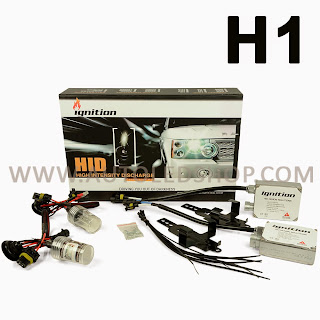From the simple acetylene lamps of 1880’s to the complicated LED assemblies today, technology has played a huge role in headlight innovation. There’s no stop as researchers are still putting in time, effort, and money into finding new breakthroughs in headlight technologies. Commonly used in automobile manufacturing, evolving headlight technologies are making roads safer and usage easier and cost-effective.
The prominent headlights which one would see around in automobiles today can be categorized into 4 technologies – Halogen, HID, LED and Laser. Let’s take a deeper look into the advantages each provides over the other.
Halogen
Halogen was the first step to headlight modernisation after the acetylene technology. However, it is still being used and preferred by several car manufacturers and owners today. Halogen uses tungsten filaments, similar to the ones found in incandescent bulbs, encased in is halogen gas for longevity and improved performance. While the filament is itself the light source, car headlights were fitted with lenses to focus light onto the road. The casing and the lens also act as an enhanced protective housing for the lights. Gradually the glass components of these headlights were replaced by polycarbonate materials that produced even stronger beams while making the overall headlight lighter. Halogen headlights thus proved to be both low cost and powerful car lighting solution. They provide a working life between 500 and 1000 hours and could be seen in the cars like Mazda MX-5 and Ford Ranger.
The disadvantage with the halogen lamps is however that much of the power (55 watt) is wasted in heating up the filament than producing the light. This doesn’t make the technology quite energy efficient.
HID (High Intensity Discharge)
Seen in the cars like the Lexus IS; HID uses a rare combination of metals and gases to generate a bright and white glow. Compared to the halogens, HID is three times stronger and brighter. However this has also been the reason that cars coming from the other direction would get blinded off. To make driving safer, several countries like Australia have put forth strict regulations for cars operating on HID technology. These headlights need to be integrated with self leveling mechanisms and a washer. Self leveling ensures that the light is pointed towards the ground and washers dust off the grime and dust.
HIDs offer more than 2000 hours of lamp life and operate on 35 watt of power (10 units less compared to halogens).
LED (Light Emitting Diode)
LED technology has come a long way from simple flash lights to being the key components in televisions and cars. Though LED is not as bright as HID, they power up in a millionth of a second and improve the reaction time on road. The small size of the LED also allows a more fashionable application in car head lighting.
Compared to halogen or HID, LEDs offer more than 15,000 hours of lamp life. However the biggest advantage of LEDs is that they don’t heat up and you can easily touch the light even when in use. Dare not do that with halogen or HID! Today, LEDs are used as mainstream car lighting seen in high end models like the Audi A8, Toyota Prius, Lexus LS and even the Corolla Sedan.
Laser
Last year, BMW came with the first laser headlights in the i8 plug-in hybrid supercar. Encased in phosphorous gas, laser headlights provide a powerful white but diffused glow. These headlights are more energy efficient but we will have to wait for some more manufacturers to use laser technology to see its worth.





